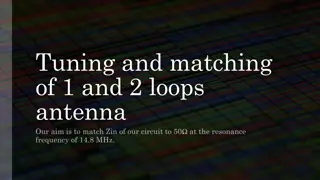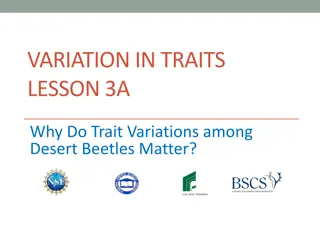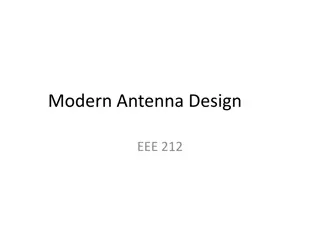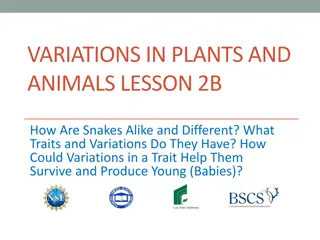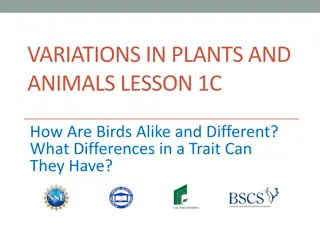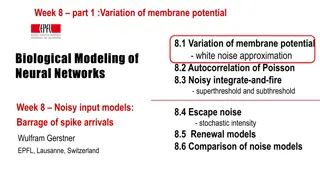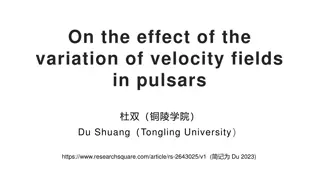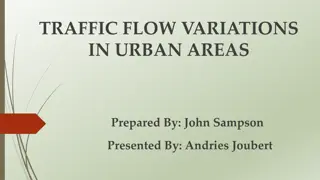Innovative Equipment Management for Improved Blood Testing in India
The LABS.FOR.LIFE.PROJECT in India, a collaboration between MoHFW, CDC, and BD, focuses on enhancing blood testing capabilities. Advanced equipment like Complete Blood Count Analyzers and different types of Cell Counters are used to analyze various blood components. The operation principles, such as
0 views • 19 slides
Understanding Power Transfer and Impedance Matching in Circuits
Exploring the concept of maximizing power transfer between a source and load through impedance matching. Learn about complex conjugates, real and magnitude of complex numbers, average power in circuits, and the importance of minimizing reflected power. Discover how incident, reflected, and delivered
2 views • 33 slides
Understanding RC Phase Shift Oscillators
Dive into the world of RC phase shift oscillators, exploring the concepts of phase and phase shift in electronic circuits. Learn how cascading RC networks can achieve specific phase shifts, the role of impedance, and the practical applications of RC feedback networks in oscillator circuits. Discover
0 views • 18 slides
AC Circuit Problems and Solutions
Explore various problems related to AC circuits, including calculations of current, voltage, reactance, impedance, and phase angles. Understand how to determine readings on ammeters and voltmeters, analyze inductor and capacitor interactions, and solve for circuit impedance with different components
0 views • 12 slides
Exploring Plant Traits: Do Plants Exhibit Variation in Traits?
Discover in this lesson whether plants display variations in traits through the measurement of plant lengths. Students analyze data tables of carrots and leaves to observe trait variations and discuss patterns found in bar graphs and data tables. The focus is on understanding how to identify and int
0 views • 11 slides
Amplifier Coupling Techniques and Applications
Amplifiers utilize various coupling techniques such as resistance-capacitance (RC), inductance (LC), transformer, and direct coupling to connect different stages. Each coupling method has its advantages and applications, such as impedance matching, power transfer, and amplification of radio frequenc
2 views • 16 slides
Influence of Environmental Factors on Sound Pressure Levels
In this study, the relationship between sound pressure, particle velocity, and the acoustic impedance is explored in the context of varying humidity, temperature, and barometric pressure. The ideal gas law is used to determine the density of both dry and humid air, considering parameters such as par
1 views • 14 slides
Enhancing Performance of EHV Lines through Series Compensation
Series compensation, involving connecting capacitors in series with electrical transmission lines, aims to improve EHV line performance by decreasing transmission impedance and enhancing voltage stability and transient stability. The method is a robust tool to optimize power transmission efficiency.
0 views • 51 slides
Understanding Data Modeling vs Object Modeling
Data modeling involves exploring data-oriented structures, identifying entity types, and assigning attributes similar to class modeling in object-oriented development. Object models should not be solely based on existing data schemas due to impedance mismatches between object and relational paradigm
0 views • 17 slides
Understanding Smith Charts in Microwave Engineering
Explore the concepts of Smith Charts in microwave engineering, focusing on the Generalized Reflection Coefficient, Complex Plane representation, Z-Chart analysis, and equation derivations for circles in the Z-Plane. Learn how to interpret impedance transformations and visualize impedance matching us
0 views • 29 slides
IWG Measurement Uncertainties: Justification of Impact Quantities
Explore the justification of main impact quantities in IWG Measurement Uncertainties session held on 6th and 7th October 2020. The analysis includes factors such as deviation from centered driving, start of acceleration, speed variations, load variations, background noise, temperature effects on noi
3 views • 25 slides
Understanding Bipolar Transistor Configurations for Electronic Circuits
Explore the three common configurations - Common Base, Common Emitter, and Common Collector - for Bipolar Transistors in electronic circuits. Each configuration offers unique characteristics such as voltage gain, current gain, and impedance levels, impacting the signal processing and amplification c
0 views • 27 slides
Understanding Feedback Amplifiers in Electronic Circuits
Feedback amplifiers play a crucial role in electronic circuits by providing mechanisms for controlling gain, stability, and overall performance. There are two basic types of feedback - positive and negative, each offering distinct advantages. The four ways of connecting feedback signals involve volt
0 views • 18 slides
Planar Transmission Lines: A Comprehensive Overview
Exploring various planar transmission lines like Microstrip, Stripline, Coplanar Waveguide, and Slotline. Understanding the field structures, analysis complexities, and solutions using conformal mapping in Stripline designs. Detailed discussions on characteristic impedance and effective width calcul
0 views • 24 slides
Increasing Impedance with Inductors in Transmission Lines
The concept of increasing impedance in a transmission line using inductors is explored in this technical discussion. The use of inductors to raise the characteristic impedance of a cable is illustrated, along with considerations for cable division and filter types. The benefits of Chebyshev filters
0 views • 15 slides
Understanding RC Coupled Amplifiers and Transistor Basics
Amplification is the process of increasing signal strength without changing its characteristics. An RC coupled amplifier is a multistage amplifier using resistors and capacitors. Transistor amplifiers amplify signals based on transistors with different configurations. The common emitter configuratio
0 views • 23 slides
Understanding Energy Distribution System Line Models
This presentation delves into the various line models used in energy distribution systems, including exact line segment models and their derivation from Kirchhoff's voltage and current laws. The discussion covers three line segment models, the computation of phase impedance and admittance matrices,
0 views • 44 slides
Advancements in Neurosurgical Instrumentation and Techniques
Thermal energy for hemostasis has a rich history dating back to ancient Egypt, evolving through fire drills, Bovie and Cushing's methods, and the introduction of lasers. Various electrical waveforms are used in neurosurgery, each with specific heating effects. Electrical energy ranging from 250,000
0 views • 55 slides
Correlated Head-Tail Instability in Beam-Beam Collisions
The study discusses the impact of the cross wake force and correlated head-tail instability in collisions with a large crossing angle. It delves into the mechanism of beam-beam instability, cross wake force induction, mode coupling, and particle tracking simulations. Design parameters and instabilit
0 views • 34 slides
Understanding Impedance and Phasor Diagrams in AC Circuits
Resistive elements in AC circuits exhibit zero phase shift between current and voltage due to their angles. Inductors introduce inductance when connected to AC sources, generating magnetic flux that affects conductor charges. Faraday and Lenz's laws explain induced voltage and current direction base
0 views • 18 slides
Understanding Operational Amplifiers (Op-Amps) and Their Applications
Operational Amplifiers (Op-Amps) are devices used to amplify signals using an external power source. They are composed of transistors, resistors, and capacitors. Op-Amps find applications in summing amplifiers, AC and DC signal processing, digital-to-analog converters, active filters, oscillators, r
1 views • 41 slides
Achieving Impedance Matching for TRF79xxA Single Receive Channel Using L Network: Calculations and Simulation
This content discusses the process of achieving impedance matching for a single receive channel in TRF79xxA devices, which operate with a 50-ohm antenna. The calculations involve determining the Q values of the legs, calculating reactances, and deriving the required values for L and C components. Si
1 views • 19 slides
Understanding Electric Circuits: Current, Voltage, and Resistance
Electric circuits involve the flow of electric current through conductors with varying levels of resistance. Current (I) is the amount of charge passing through a point in a wire per unit of time, measured in amperes. Voltage (V) is the potential difference required to make electrons flow in a condu
0 views • 25 slides
Deconvolving Snow Cover and Snowfall Passive Microwave Signals
This research focuses on deconvolving snow cover and snowfall passive microwave signals using GPM data. The study employs a data-driven approach to estimate snowfall using a nested K-nearest algorithm and observed irregularities. By analyzing variations in brightness temperatures (Tbs) over snow-cov
0 views • 9 slides
Pathological Differences in Hip Joint Variations: Abnormal Gait Analysis
Understanding pathological gait variations related to hip joint differences is crucial in gait analysis. Excessive sagittal, coronal, and transverse plane motions impact stance and swing phases, leading to deviations in gait patterns. Excess flexion, limited flexion, past retraction, excess adductio
0 views • 13 slides
Fault Location and Detection in Smart Grids
Fast and accurate fault detection and location are crucial in power grid management, especially in smart grids with bidirectional power flow. This study explores various fault location methods including impedance-based and travelling waves-based approaches. It also discusses the use of Intelligent E
0 views • 10 slides
Analysis of Impedance in Conducting Materials
In these notes, the impedance of a round wire made of conducting material is examined in detail. The analysis includes the consideration of the wire's conductivity, current flow, and impedance per unit length. Various integration identities and equations are derived to understand the behavior of the
0 views • 45 slides
Impedance and HOM Heating in IR Region of MDI for CEPC
This study explores impedance and Higher Order Mode (HOM) heating in the Infrared (IR) region of MDI for the Circular Electron Positron Collider (CEPC). It discusses beam parameters, structure, layout of the vacuum chamber, and power deposition for different IR pipe models in detail. Additionally, i
0 views • 33 slides
Importance of Rock v. MWB [2018] UKSC 24 as Explained by Lord Sumption
The case of Rock v. MWB [2018] UKSC 24 holds significant importance due to the ruling by Lord Sumption and the Supreme Court's decision regarding contract variations. It revolved around a dispute between MWB, a serviced office provider, and Rock Advertising over alleged contractual variations made o
0 views • 12 slides
Tuning and Matching of 1 and 2 Loops Antenna
The aim of the project is to match the impedance of the circuit to 50 ohms at the resonance frequency of 14.8 MHz. The process involves calculating the impedance, working at low frequencies to determine key parameters, calculating capacitors, determining Q, and finally calculating tuning and matchin
0 views • 25 slides
Importance of Trait Variations in Desert Beetles
Exploring the significance of trait variations among desert beetles, this lesson delves into why variations matter and how they impact survival in the desert environment. Through activities and discussions, students analyze traits, predict beetle survival, and understand the implications of variatio
0 views • 10 slides
Understanding Factors Influencing Temperature Variations in US Cities
Solar zenith angle, location, specific heat, and axial tilt are key factors influencing temperature variations in US cities. Proximity to water bodies, altitude, and latitude also play significant roles. This lab explores why coastal cities experience different temperature patterns compared to inlan
0 views • 8 slides
Discussion on Isolating Flanges in SPS Impedance Model
Discussing the installation and impact of insulating flanges in the SPS, particularly on eddy currents and resonance effects. The presence of isolated flanges to prevent eddy currents in grounding loops is analyzed, along with potential enhancements in dynamic effects. Preliminary measurements and m
0 views • 11 slides
Analysis of Bunch Lengthening in CEPC for Different Design Parameters
This study explores bunch lengthening in the Circular Electron Positron Collider (CEPC) for various design parameters, analyzing a 54 km design scheme, a 61 km design scheme, and a 100 km design scheme. The analysis includes the theoretical framework used, equations for bunch lengthening, and conclu
1 views • 15 slides
Overview of Impedance and Reflection Coefficient in 1-Port Network Transmission Lines
Explore the fundamentals of 1-port networks, focusing on impedance, admittance, and reflection coefficient. This lecture from EEE 212 delves into the review of these key concepts essential for modern antenna design. Drawing insights from HP/Agilent Application Note 95-1, the discussion provides a fo
0 views • 140 slides
Exploring Snake Traits and Variations
Delve into the world of snakes to understand their shared traits and diverse variations. Discover how these variations in traits help snakes survive and reproduce, offering insights into their unique characteristics and evolutionary advantages.
0 views • 14 slides
Exploring Bird Variations: A Comparative Study
Dive into the world of bird variations in this informative lesson discussing how birds are alike and different, the importance of traits, and exploring differences among bird species. Discover the concepts of variations and traits through engaging activities and observations.
0 views • 14 slides
Exploring Membrane Potential Variations in Neural Networks
Delve into the dynamics of membrane potential variations in neural networks through topics like white noise approximation, autocorrelation of Poisson processes, and the Noisy Integrate-and-Fire model. Investigate how these variations manifest at different thresholds, shedding light on the biological
0 views • 63 slides
Impact of Velocity Field Variations on Pulsar Magnetic Fields
The study explores how variations in velocity fields affect pulsar magnetic fields, highlighting the conversion of kinetic energy to magnetic energy in pulsars. Glitches in these systems can lead to changes in magnetic fields, influencing pulsar emissions. The maintenance of stable magnetic fields a
0 views • 14 slides
Traffic Flow Variations in Urban Areas: A Comparative Study Between 1980 and 2015
This study compares the traffic flow variations in urban areas, focusing on average daily traffic totals, daily traffic volumes, and monthly variations between the years 1980 and 2015 in Johannesburg. Data collection locations, including traffic data from different sites and lanes, are presented alo
0 views • 20 slides


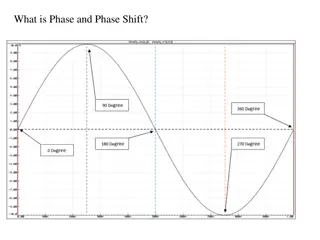

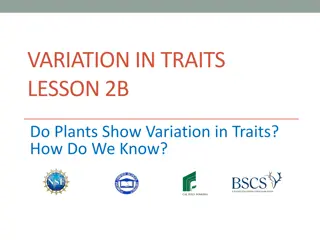




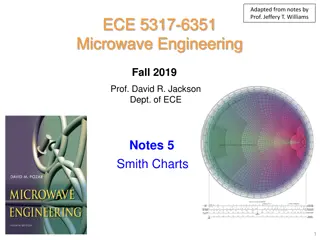
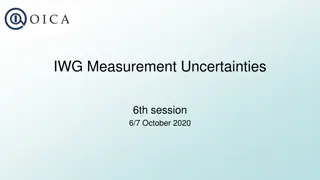


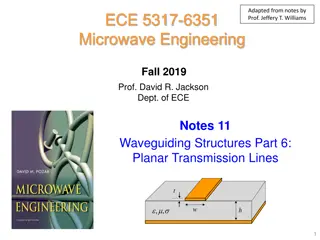
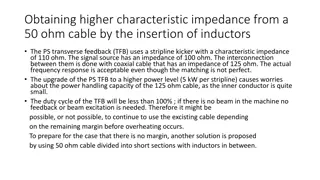
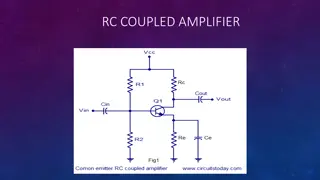
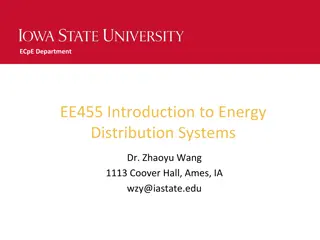


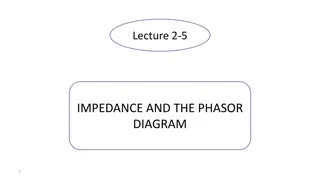
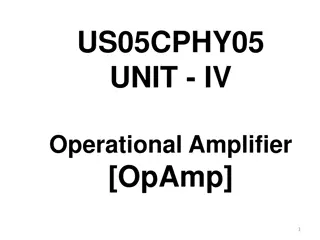
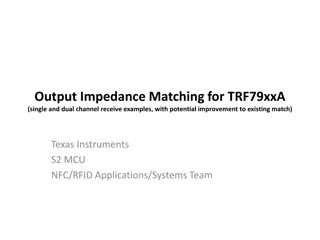

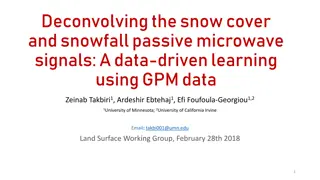
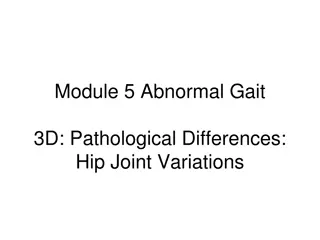
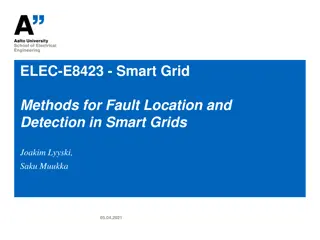

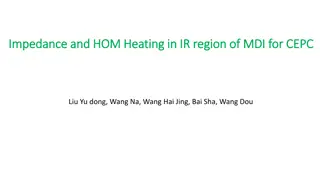
![Importance of Rock v. MWB [2018] UKSC 24 as Explained by Lord Sumption](/thumb/193348/importance-of-rock-v-mwb-2018-uksc-24-as-explained-by-lord-sumption.jpg)
